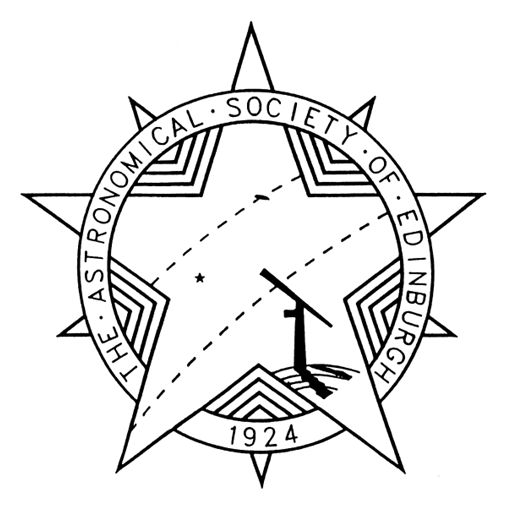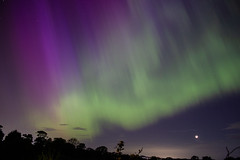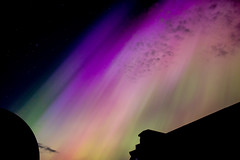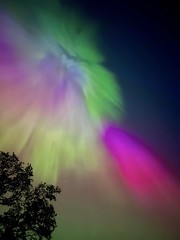Monthly Archives: December 2015
Scotland’s Sky in December, 2015
Posted by ASE
Get ready for a memorable meteor display

The maps show the sky at 21:00 GMT on the 1st, 20:00 on the 16th and 19:00 on the 31st. (Click on map to englarge)
Experience tells us that the coldest night of the winter is unlikely to occur during December, but the month does bring our longest ones as the Sun dips to its farthest south at the winter solstice, due this year at 04:48 GMT on the 22nd.
Those long nights begin with Pegasus nearing the meridian but, by our star map times, its famous Square is in the south-west and our eastern sky has been claimed by the sparkling constellations of winter. Orion is unmistakable, his three Belt stars aligned almost vertically and pointing up to Aldebaran in Taurus and on to the Pleiades cluster.
There is another occultation of Aldebaran by the Moon on the 23rd with the star blinking out at the Moon’s limb just before 18:18 as viewed from Edinburgh, and reappearing by 19:15. The Moon’s glare means that we will probably need a telescope to view the event.
Sunrise/sunset times for Edinburgh vary from 08:18/15:44 on the 1st, to 08:42/15:40 on the 22nd and 08:44/15:47 on the 31st. The Moon’s last quarter on the 3rd is followed by new on the 11th, first quarter on the 18th and full on the 25th.
Our evening sky remains devoid of bright planets at present, but the return of the annual Geminids meteor shower is ample compensation. Now regarded as our best meteor display, this is active from the 8th to the 17th with its peak predicted for about 13:00 on the 14th with meteor rates of perhaps 120 per hour for an observer under an ideal dark sky. This is, of course, during our daylight but, unlike some other showers, meteor activity remains high for more than 24 hours and the nights of 13th/14th and 14th/15th could both be memorable. Just be careful to wrap up well to get your fill of long, bright, medium-slow meteors.
The radiant, the point in the sky from which the meteors appear to diverge, is plotted close to the star Castor in Gemini on the eastern side of our North map. Gemini lies north and east of Orion and as Orion marches across our southern sky so the radiant climbs to pass high in the south at 02:00. Remember that the meteors are visible in all parts of the sky, not just near Gemini – it is their streaks that point back to the radiant.
As Orion crosses our meridian some four hours after our map times, so the first bright planet of the night rises in the east. Jupiter brightens further from magnitude -2.0 to -2.2 as it creeps 2° or four Moon-breadths east-south-eastwards in south-eastern Leo, some 20° below and left of the star Regulus.
As the most conspicuous object in the middle of our southern sky before dawn, Jupiter stands just above the Moon on the 4th and to the Moon’s left on the 31st. By the month’s end, it rises more than one hour before midnight and its interesting cloud-banded disk has swollen in diameter from 36 to 39 arcseconds as seen telescopically.
The night’s second naked-eye planet, Mars, lies 20° east-south-east (below-left) of Jupiter and just below the star Porrima in Virgo as the month begins. At magnitude 1.5, but improving to 1.3, it, too, tracks east-south-eastwards to pass 4° north of Spica on the 21st. Look for it close to the waning Moon before dawn on the 6th but don’t expect your telescope to show much if any detail on its tiny 5 arcseconds disk.
The third planet is the brightest of all. Venus climbs above Edinburgh’s eastern horizon at 03:53 on the 1st and, at magnitude -4.2, may still be visible 25° high in the south-south-east at sunrise. It is then 4° north-east of Spica, but it speeds through Virgo and much of Libra so that, by the 31st, it rises in the south-east at 05:26 and is 15° high in the south at sunrise.
As Venus recedes, its gibbous disk shrinks from 17 to 14 arcseconds in diameter. Its motion takes it 2° above Zubenelgenubi in Libra on the 17th and to within a similar distance of the Graffias in Scorpius on the 31st. Venus is occulted for observers over much of N America as it is overtaken by the Moon next Monday.
Saturn, magnitude 0.5, emerges from the morning twilight to hover low in the south-east, below and to the left of Venus, during the final ten days of the year. On those same days, but in the evening, it might just be possible to spot Mercury as it shines at magnitude -0.5 some 5° high in the south-west only 30 minutes after sunset.
Comet 2013 US10 Catalina is likely to be a binocular object as it climbs into our south-eastern sky before dawn. Thought to be an asteroid when it was discovered in 2013, hence its odd name, it was closest to the Sun (123 million km) on November 15 and is due to pass closest to the Earth (108 million km) on January 17. There has been speculation that it might become a naked eye object of the fourth magnitude or better.
However, having spent weeks hidden in the Sun’s glare, it was a disappointing sixth magnitude object when it was recovered a couple of weeks ago. I fear it may not get much better than this, though the fact that it has two, or even three, tails will make for some interesting photographs. From 11° below-left of Venus as the month begins, it tracks almost due northwards to stand only 4° to the right of Venus next Monday (with the Moon nearby) and lie a mere 2° south of the bright star Arcturus in Bootes by the 31st.
Alan Pickup



